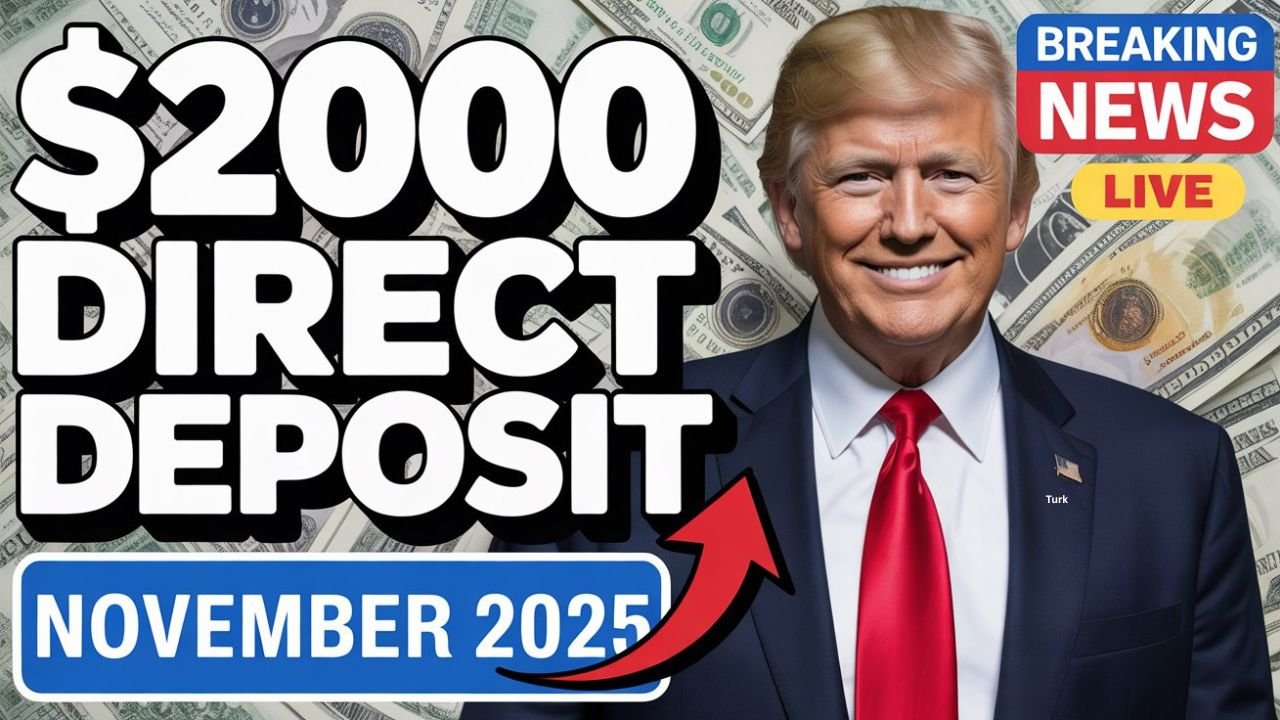As talk of new financial relief sweeps across the country, many Americans are asking whether the IRS has officially approved a $2,000 direct deposit payment for eligible taxpayers. With living costs still high and inflation affecting everyday essentials, this news has caught the attention of millions. Here’s what we know about the $2,000 payment, who might qualify, and when deposits could begin.
Overview of the $2,000 Direct Deposit
The Internal Revenue Service (IRS) and the U.S. Department of the Treasury are coordinating several financial programs aimed at supporting low- and middle-income households. Among the discussions, a $2,000 direct deposit payment has reportedly been approved as part of an expanded relief initiative to help offset rising expenses in 2025.
While the program mirrors the structure of previous stimulus checks, this payment is not considered a new “COVID-era” stimulus. Instead, it’s part of broader economic relief efforts designed to strengthen consumer spending and reduce financial strain on working families.
$2000 Direct Deposit From IRS This November? What to know About stimulus checks
Who Is Eligible for the $2,000 Payment?
Eligibility for the $2,000 direct deposit depends on income levels, tax filing status, and dependency claims. According to IRS guidelines and proposed distribution plans, the following groups may qualify:
-
Single Taxpayers earning up to $75,000 annually.
-
Married Couples filing jointly earning up to $150,000 annually.
-
Heads of Household earning up to $112,500 annually.
-
Individuals who received previous stimulus or relief payments may automatically qualify again if they meet the 2024–2025 income criteria.
-
Non-filers or individuals receiving Social Security, SSI, SSDI, or VA benefits may also be included if their information is already on file with the IRS.
Higher-income earners may receive a reduced payment, as the $2,000 amount phases out beyond certain income limits.
How Will the Payments Be Sent?
The IRS plans to deliver the payments through the same methods used for earlier stimulus checks:
-
Direct Deposit: For taxpayers who have provided their bank account details on recent tax returns.
-
Paper Checks: For individuals without direct deposit information.
-
Prepaid Debit Cards (EIP Cards): For certain recipients where banking details are unavailable.
Payments are expected to begin processing in November 2025, with most direct deposits arriving first, followed by mailed checks within several weeks.
How to Check Your Payment Status
Eligible recipients can check their payment status through the IRS’s official tracking tool, “Get My Payment,” once the rollout begins. To verify eligibility or update bank information, individuals should:
-
Log in to their IRS online account.
-
Review their latest tax return information (2023 or 2024 filings).
-
Ensure all mailing and bank account details are correct.
Taxpayers who have not yet filed a recent return are encouraged to do so to avoid delays in receiving their payment.
Why the IRS Is Issuing This Relief
The $2,000 direct deposit aims to provide short-term assistance to millions of Americans struggling with rising rent, grocery prices, healthcare costs, and utilities. Officials believe this payment could stimulate consumer spending and stabilize the economy during the final quarter of 2025.
This effort aligns with other targeted initiatives, including energy rebates, child tax credits, and senior support payments already being distributed across various states.
Key Dates to Remember
-
Program Approval: Fall 2025
-
Direct Deposit Rollout: Expected to start in November 2025
-
Paper Checks: Expected by December 2025 – January 2026
-
Deadline to Update IRS Information: Before November 10, 2025 (recommended)
FAQs
1. Is this the same as a COVID-19 stimulus check?
No, this is a new federal relief initiative designed to help with inflation and cost-of-living challenges in 2025.
2. Do I need to apply for the payment?
No formal application is required for most people. If you’ve filed taxes or receive federal benefits, you’ll be considered automatically.
3. Can non-filers get the $2,000 payment?
Yes. Individuals who didn’t file taxes but receive Social Security, SSI, or VA benefits can still qualify.
4. When will the payment arrive?
Most direct deposits are expected in November 2025, with mailed checks following shortly afterward.
5. Will the payment be taxable?
No, the $2,000 payment is not considered taxable income.
Final Thoughts
The IRS’s approval of the $2,000 direct deposit payment marks a significant effort to provide Americans with extra financial support heading into 2026. If you qualify, ensure your tax and bank information are updated with the IRS to receive your funds without delay.
This relief could offer crucial help for households navigating ongoing financial challenges — providing much-needed stability at a time when many families need it most.





